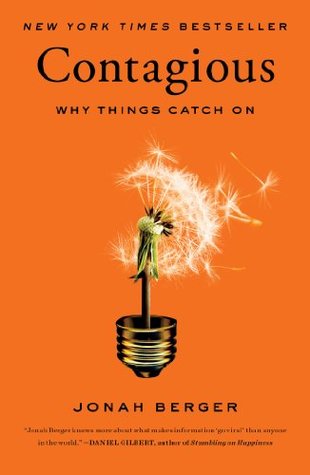More on this book
Community
Kindle Notes & Highlights
On the positive side, excite people or inspire them by showing them how they can make a difference. On the negative side, make people mad, not sad.
Designing messages that make people anxious or disgusted (high arousal) rather than sad (low arousal) will boost transmission.
Among students who had been instructed to jog, 75 percent shared the article—more than twice as many as the students who had been in the “relaxed” group. Thus any sort of arousal, whether from emotional or physical sources, and even arousal due to the situation itself (rather than content), can boost transmission.
a key factor in driving products to catch on is public visibility. If something is built to show, it’s built to grow.
But when she looked at hundreds of kidney donations, MIT professor Juanjuan Zhang found that social proof also leads people to turn down available kidneys.
Because behavior is public and thoughts are private.
Tickets usually sit in people’s pockets, but if theater companies and minor league teams could use buttons or stickers as the “ticket” instead, “tickets” would be much more publicly observable.
Behavioral residue is the physical traces or remnants that most actions or behaviors leave in their wake. Mystery lovers have shelves full of mystery novels. Politicos frame photos of themselves shaking hands with famous politicians. Runners have trophies, T-shirts, or medals from participating in 5Ks.
As Hornik said, Our basic hypothesis is that the more kids saw these ads, the more they came to believe that lots of other kids were using marijuana. And the more they came to believe that other kids were using marijuana, the more they became interested in using it themselves.
If Social Currency is about information senders and how sharing makes them look, Practical Value is mostly about the information receiver. It’s about saving people time or money, or helping them have good experiences.
Researchers find that whether a discount seems larger as money or percentage off depends on the original price. For low-priced products, like books or groceries, price reductions seem more significant when they are framed in percentage terms. Twenty percent off that $25 shirt seems like a better deal than $5 off. For high-priced products, however, the opposite is true.
A simple way to figure out which discount frame seems larger is by using something called the Rule of 100. If the product’s price is less than $100, the Rule of 100 says that percentage discounts will seem larger. For a $30 T-shirt or a $15 entrée, even a $3 discount is still a relatively small number. But percentagewise (10 percent or 20 percent), that same discount looks much bigger. If the product’s price is more than $100, the opposite is true.
Useful information, then, is another form of practical value. Helping people do things they want to do, or encouraging them to do things they should do. Faster, better, and easier.
But this mostly informational content often ends up being embedded in a background narrative. My son just turned eight so we were planning our first trip to Disney World last July. We needed a digital camera to capture the experience so bought this one because my friend recommended it. The zoom was great. We could easily get sharp pictures of Cinderella’s Castle even from far away. We’re so used to telling stories that we do it even when a simple rating or opinion would have sufficed.
My cousin’s experience makes for a nice story, but when you look closer there is also a huge amount of useful information hidden in the narrative: (1) Topcoats look great but aren’t really warm enough for a bitter East Coast winter. (2) Down coats make you look like a mummy, but they’re worth getting if you want to stay warm. (3) Lands’ End makes a really warm winter coat. (4) It also has outstanding customer service. (5) If something goes wrong, Lands’ End will fix it. These are just a handful of the nuggets of knowledge woven into a deceptively simple story.
Allport and Postman then looked at which story details persisted along the transmission chain. They found that the amount of information shared dropped dramatically each time the rumor was shared. Around 70 percent of the story details were lost in the first five to six transmissions. But the stories didn’t just become shorter: they were also sharpened around the main point or key details.
Make sure your desired information is so embedded into the plot that people can’t tell the story without it.
sociologist Duncan Watts makes a nice comparison to forest fires. Some forest fires are bigger than others, but no one would claim that the size of the fire depends on the exceptional nature of the initial spark. Big forest fires aren’t caused by big sparks. Lots of individual trees have to catch fire and carry the flames.
Social Currency We share things that make us look good Triggers Top of mind, tip of tongue Emotion When we care, we share Public Built to show, built to grow Practical Value News you can use Stories Information travels under the guise of idle chatter
Social Currency Does talking about your product or idea make people look good? Can you find the inner remarkability? Leverage game mechanics? Make people feel like insiders? Triggers Consider the context. What cues make people think about your product or idea? How can you grow the habitat and make it come to mind more often? Emotion Focus on feelings. Does talking about your product or idea generate emotion? How can you kindle the fire? Public Does your product or idea advertise itself? Can people see when others are using it? If not, how can you make the private public? Can you create
...more


